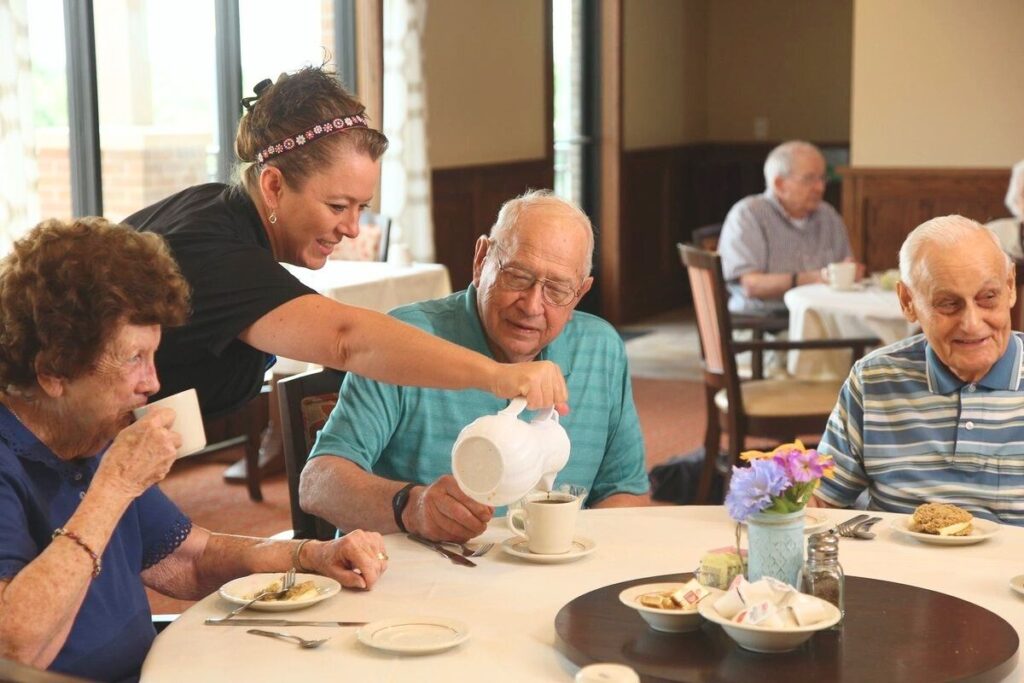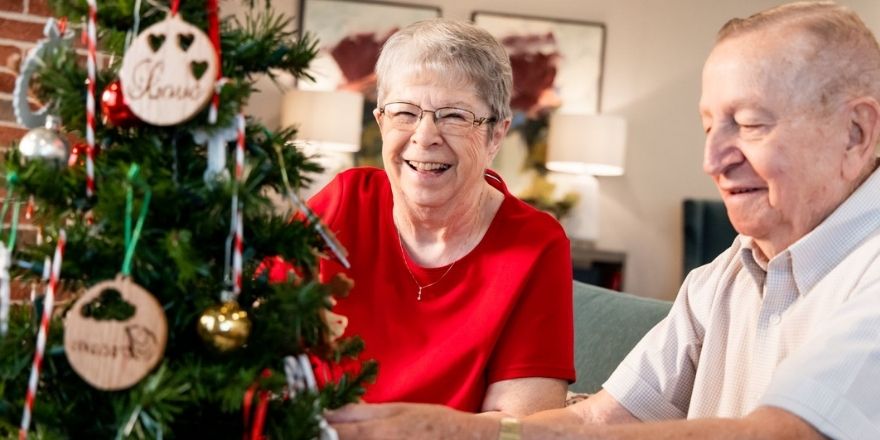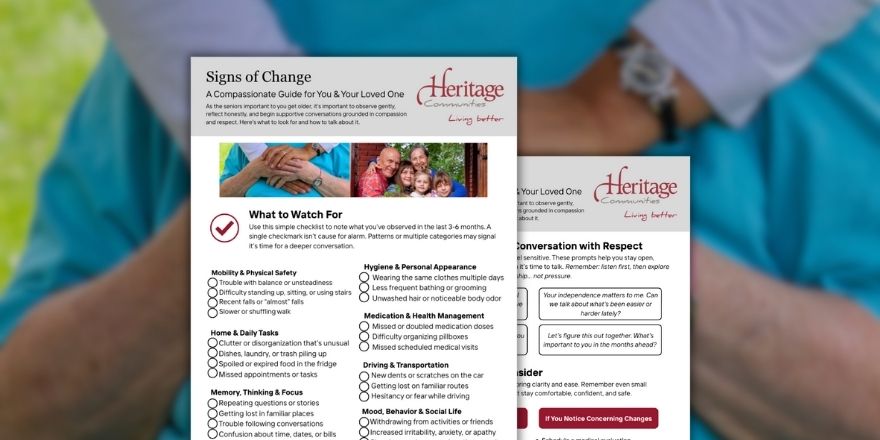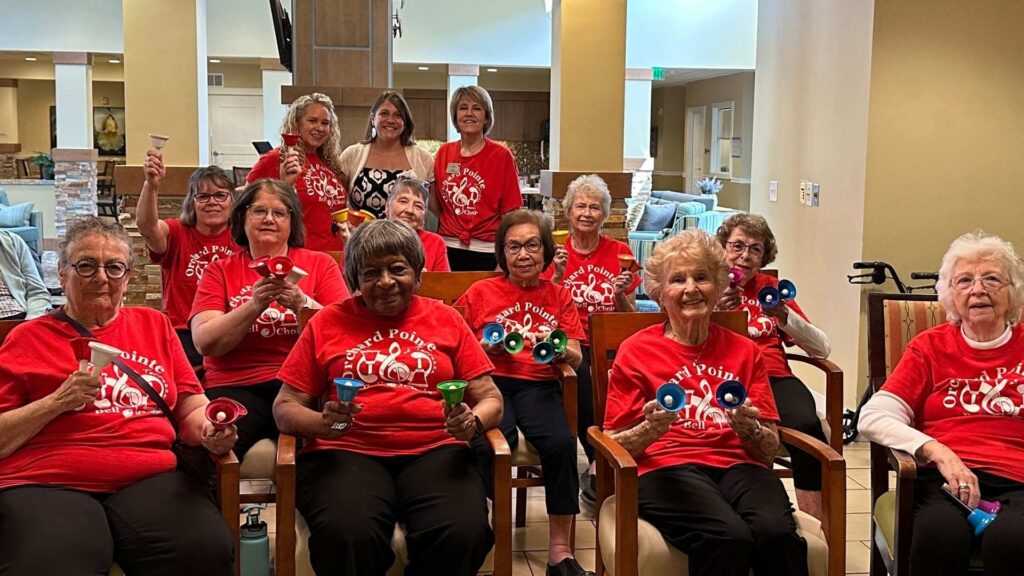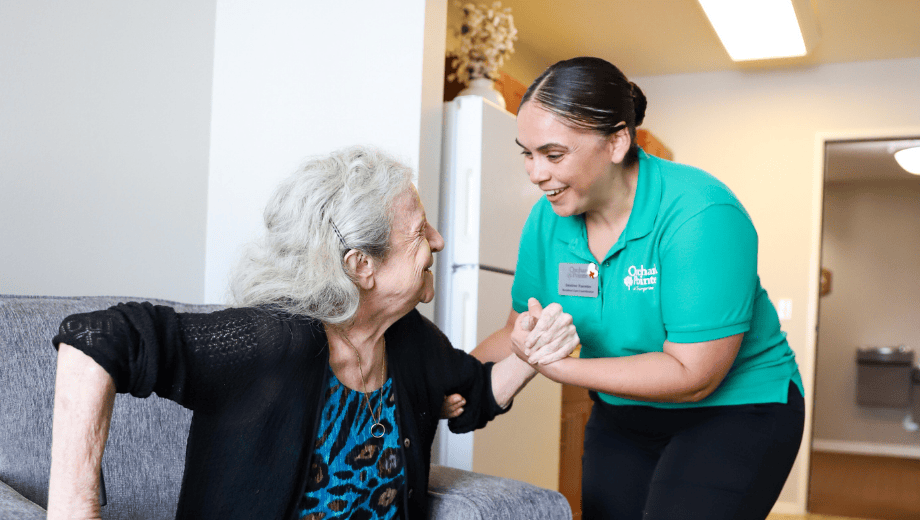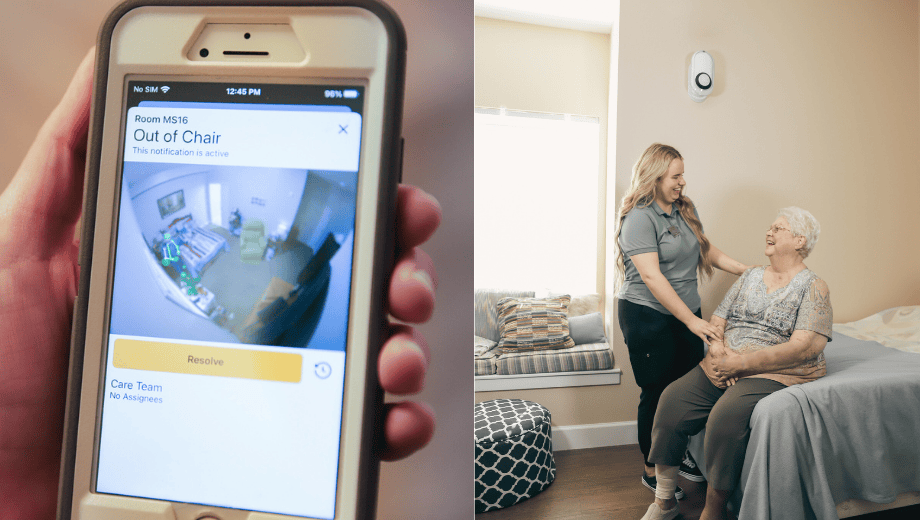10 Myths About Senior Living (And How to Talk Through Them)
Explore 10 of the most common concerns we hear from seniors and families exploring senior living... and how to have a constructive conversation.
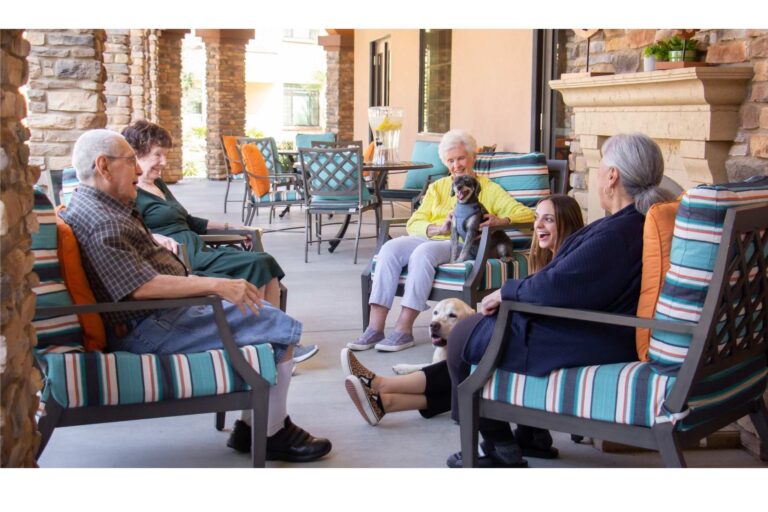
If you’re helping a loved one look into senior living, you’re probably hearing all kinds of questions, concerns, and maybe even some pushback. You probably also have hesitations of your own. All of that is totally normal. Choosing a new place to live – especially later in life – brings up a lot of feelings.
At Heritage Communities, we’ve walked this road with hundreds of families. And we’ve learned something important: most of the reasons people say no to senior living aren’t really about the move. They’re about emotion. Saying no often means, “This is scary” or “This is hard for me.”
We spoke with Kristina, an experienced Director of Sales at Heritage Pointe, to build this gentle look at some common myths your loved one might be holding onto. Use it to understand some of the emotions at stake here and to respond with love, patience, and understanding.
“I’m not ready yet.”
What they might really mean: They’re scared or overwhelmed. Change is tough, and moving can feel like giving up control.
How to help:
- Ask, “What would have to happen for you to feel ready?” Let them lead.
- Suggest something simple: “Want to join me for lunch at a community?” Your local Heritage Communities frequently hosts events open to anyone!
- Reassure them: “No pressure. Just exploring.”
“I can’t afford it.”
What they might really mean: Money is a worry… but they might not have run the numbers, and they might not understand all the available options to fund senior care.
How to help:
- Sit down and compare costs together – groceries, home repairs, in-home care – versus what’s included in senior living.
- Point out the value: meals, care, 24-hour staff, housekeeping, cable, no chores
“Sometimes there’s sticker shock at first,” says Kristina. “But once families start breaking down the cost of daily life – lawn care, groceries, utilities – they realize senior living often makes financial sense.”
And don’t forget the time factor. “You can spend all your energy mowing the lawn… or spend your afternoon doing what you love.”
“I love my home. I’m not leaving.”
What they might really mean: Their home feels like part of who they are. Leaving it feels like a loss.
How to help:
- Listen to their stories and honor the memories.
- Ask, “What feels different about living here now?”
- Reframe what home means: “You take those memories with you,” says Kristina. “And yes – you can bring your furniture, hang your photos, make it your own. It’s your apartment.”
“Senior living is for ‘old people.’ I’m not there yet.”
What they might really mean: This isn’t about age – it’s about identity. They’re afraid of losing independence.
How to help:
- Share real stories of residents staying active and doing what they love. Follow the Facebook or Instagram account of your local Heritage Community for tons of updates on activities and happenings!
“People here go out to eat, play cards, and shop,” shares Kristina. “You’re not locked in. You’re just living here… with support.”
- Ask, “What does independence look like for you now?”
- Remind them: “This is about more freedom – not less.”
“I don’t need that much help.”
What they might really mean: It’s hard to admit they need support. It can feel like failure.
How to help:
- Reframe it: “This is about options and peace of mind.”
- Ask: “What would help you worry less? What would help me worry less?”
“Really, they gain independence,” says Kristina. “We take care of the things they’re struggling with at home so they can focus on enjoying life.”
“It’s too much to think about.”
What they might really mean: Downsizing and moving feels overwhelming.
How to help:
- Break it into small steps.
- Bring in help: move managers, checklists, memory books.
- Remind them: “You don’t have to do this alone. I’m with you.”
“My kids will take care of me.”
What they might really mean: They don’t want to be a burden. Or they think you can do it all.
How to help:
- Be honest: “I love you, but I’m stretched thin. I want our time to be about joy, not just caretaking.”
- Say: “Let’s build a support team together.”
“I’m just gathering information.”
What they might really mean: They’re curious but cautious.
How to help:
- Let them know: “That’s a great first step.”
- Ask: “What’s on your mind lately?”
- Let them move at their own pace.
“A facility is cold and institutional,” or “It’s a nursing home.”
What they might really mean: They’re thinking of outdated nursing homes, not today’s thriving, active communities.
How to help:
“A lot of people still think of us like the old nursing homes,” says Kristina. “But they walk in and see bingo games, laughter, neighbors helping each other to the elevator. They see friends who didn’t know each other before now laughing together.”
- Say: “It’s not a facility – it’s a neighborhood with heart,” and then invite them to come see us!
“If I move in, it means I’ve given up.”
What they might really mean: It feels like closing a chapter.
How to help:
- Gently ask: “What if it’s the start of something better?”
- Remind them: “You’re gaining more than you’re giving up.”
“It’s not the end,” reminds Kristina. “It’s the beginning. It’s where you might meet your best friend at 85!”
When You’re Ready to Explore… We’re Here!
Making the transition to senior living is more than a move – it’s emotional. It’s about identity, dignity, and what comes next. But your parent isn’t in this alone, and neither are you.At Heritage Communities, we believe senior living should bring more – more connection, more ease, more joy. Whether you’re ready to tour or just want to talk, we’re here. Contact us here!

